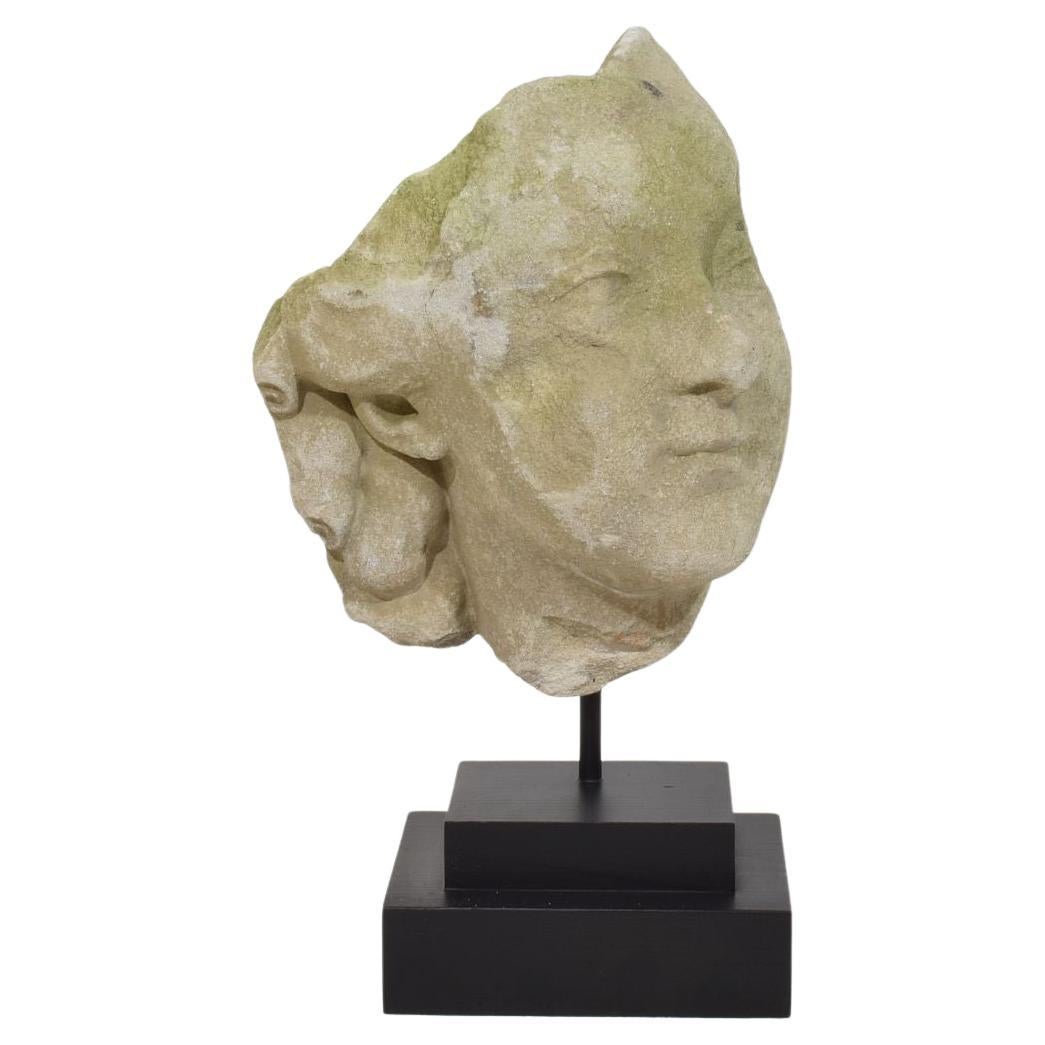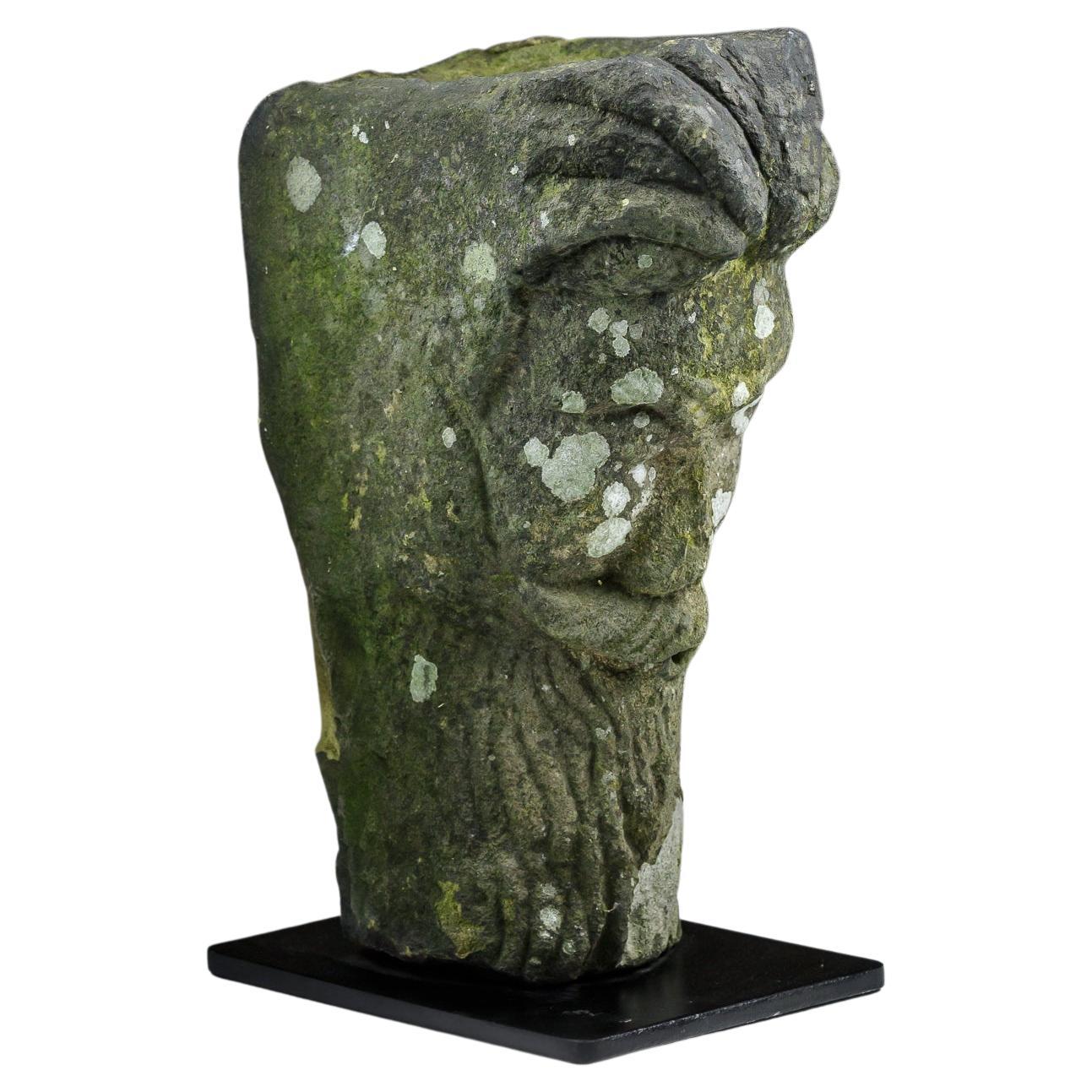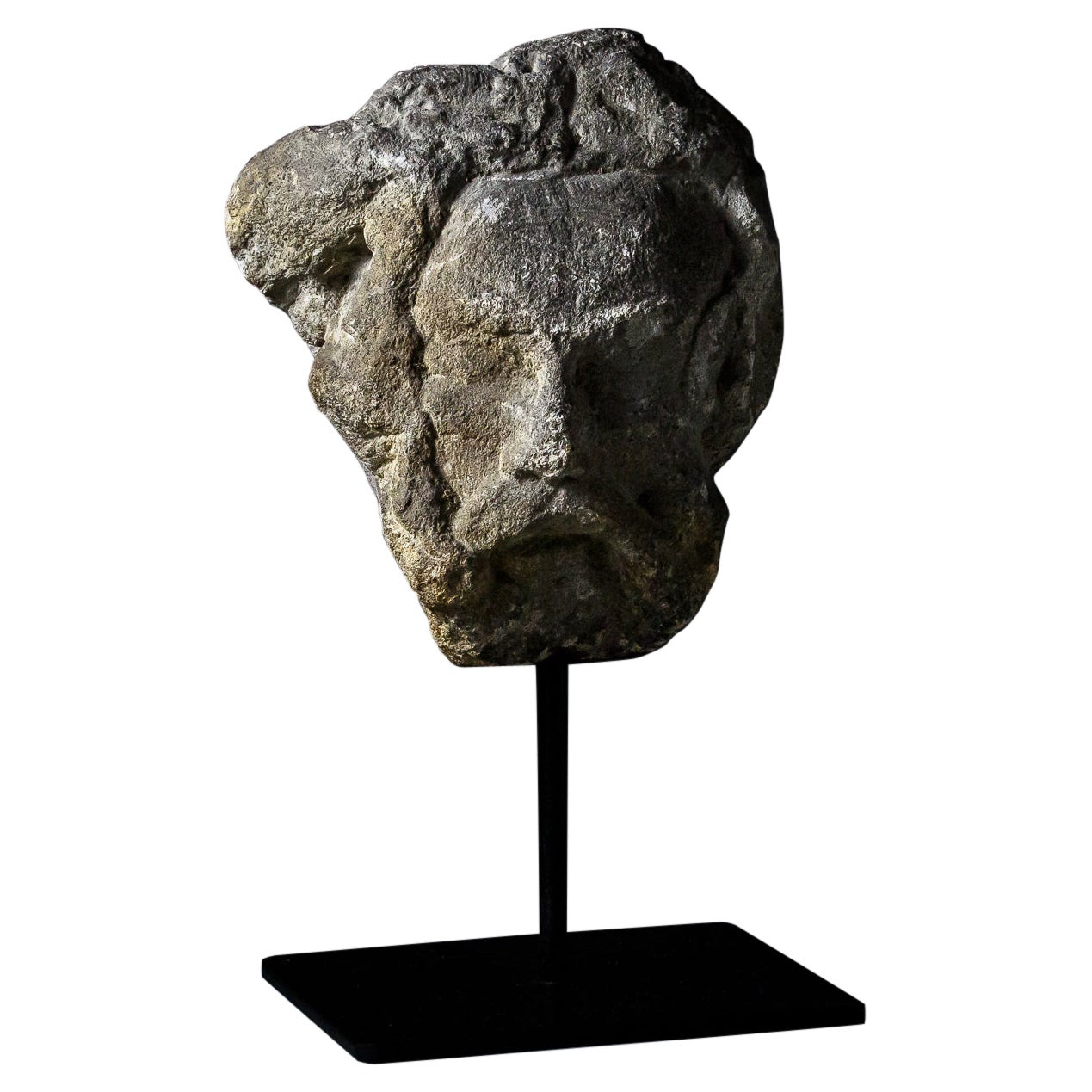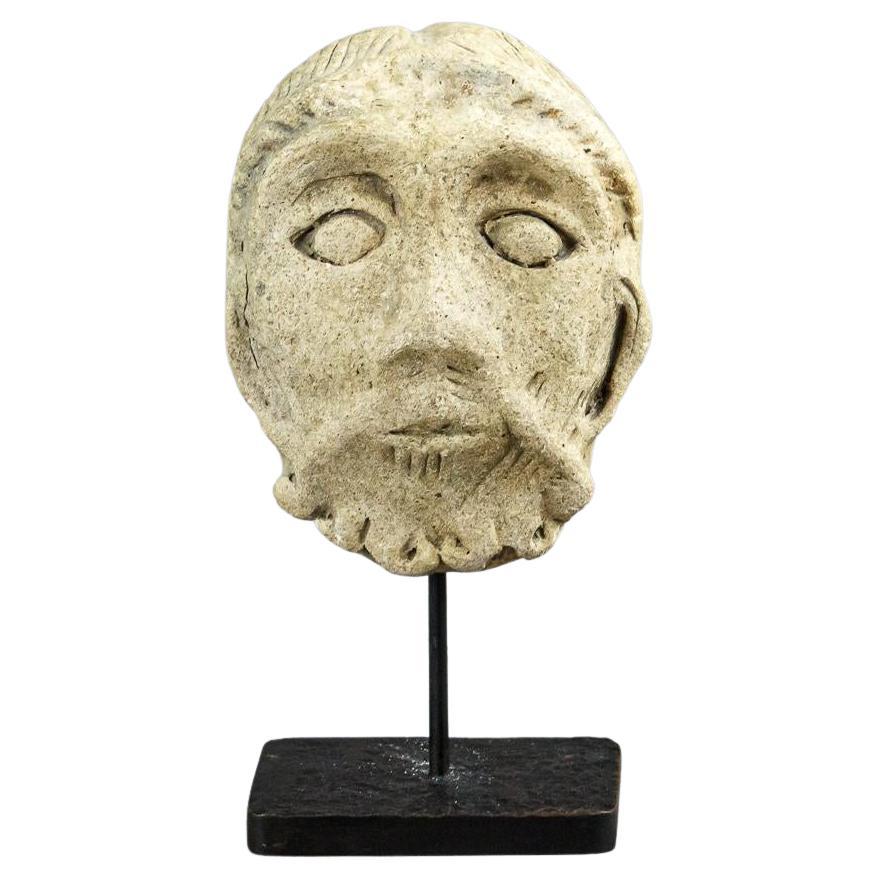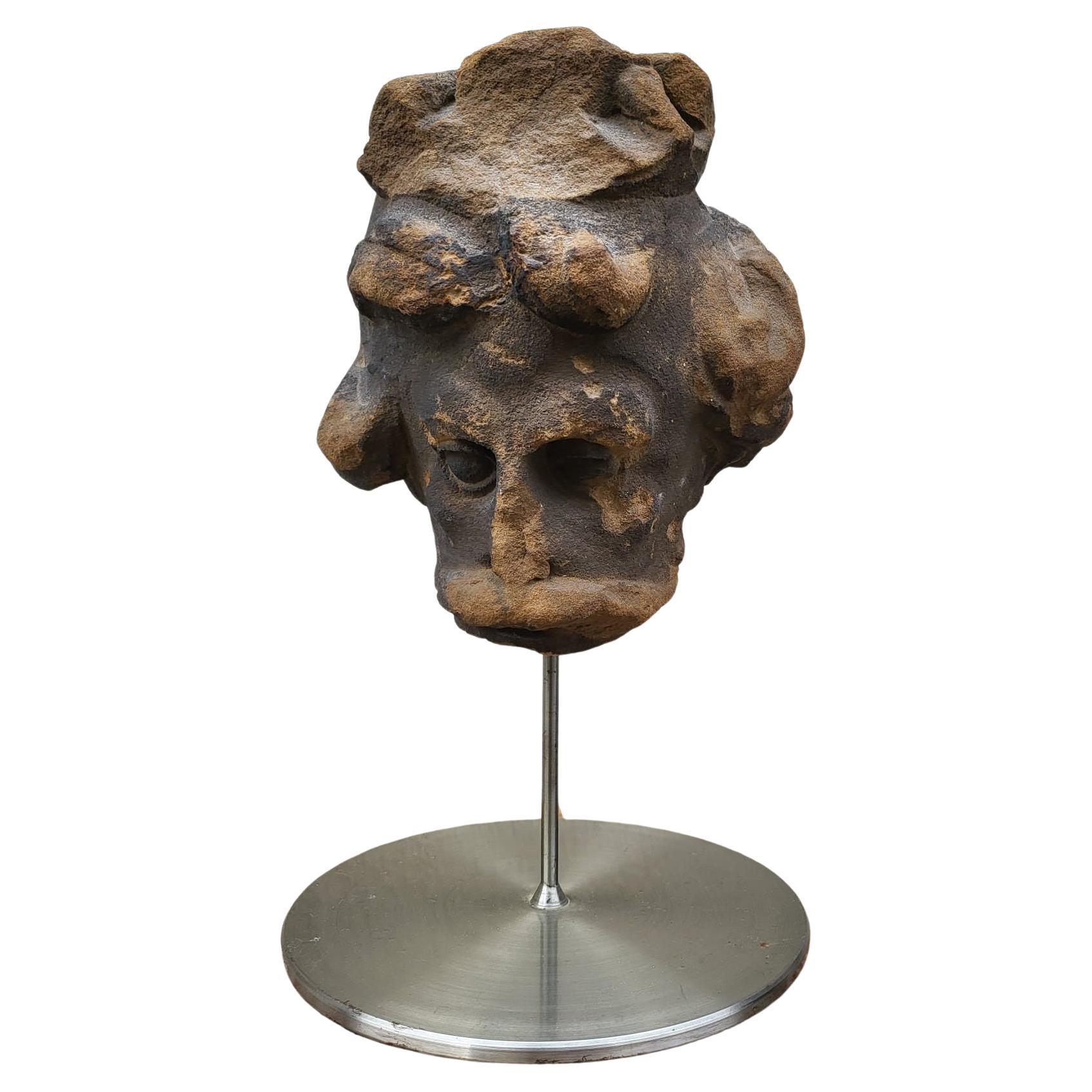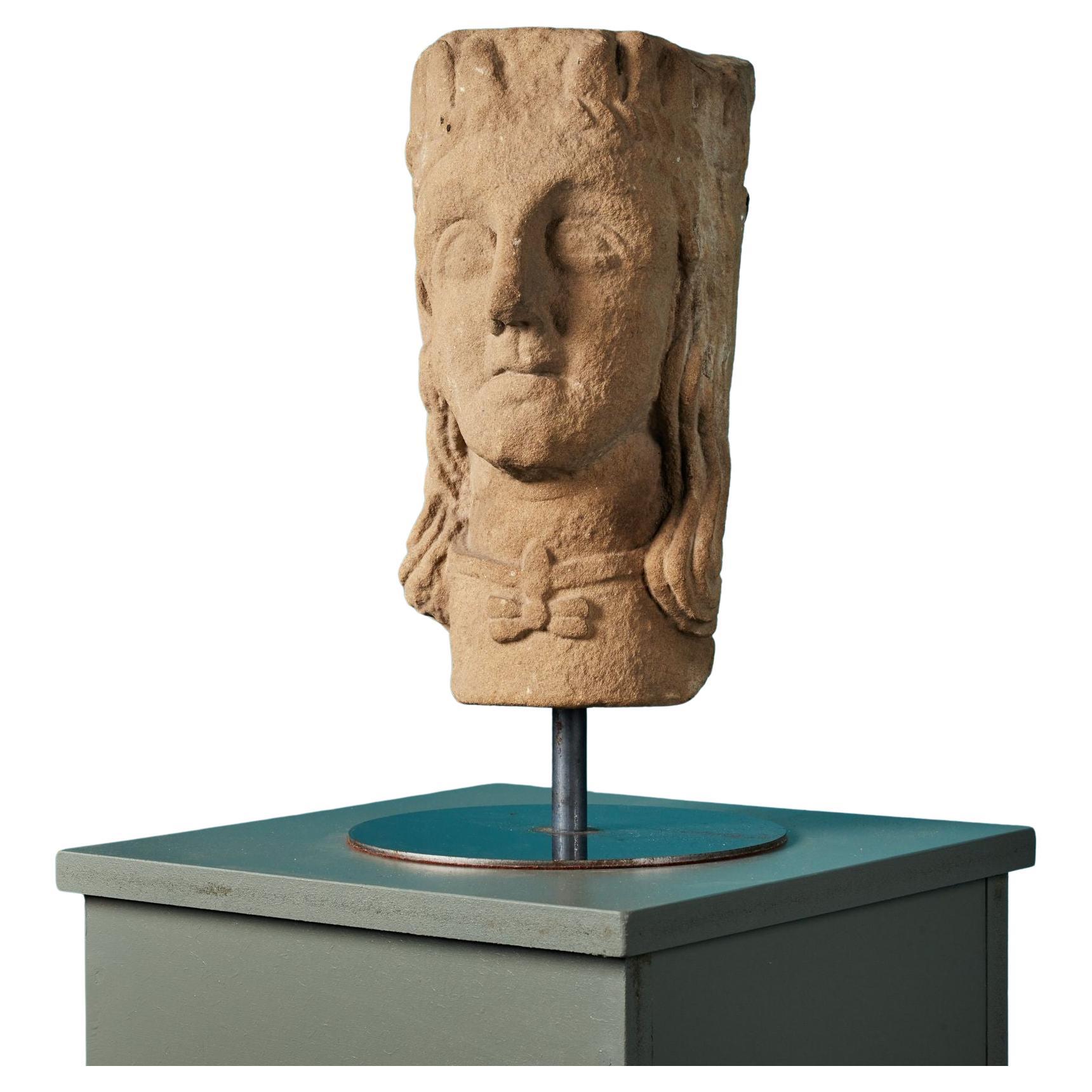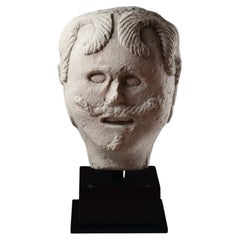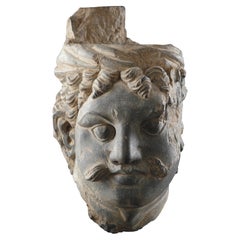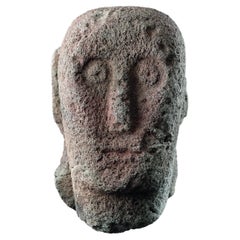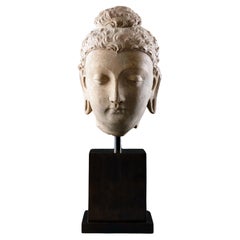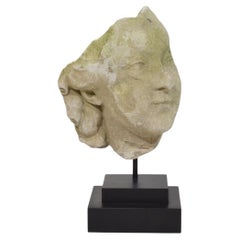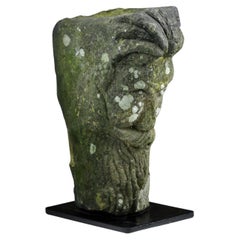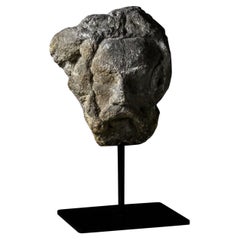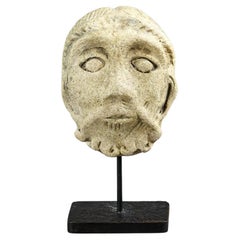Items Similar to A Rare and Finely Carved Weser Renaissance Stone Head
Want more images or videos?
Request additional images or videos from the seller
1 of 7
A Rare and Finely Carved Weser Renaissance Stone Head
$33,500
£25,305.52
€29,245.97
CA$47,076.52
A$52,340.92
CHF 27,560.67
MX$635,052.87
NOK 348,931.57
SEK 326,165.98
DKK 218,250.35
About the Item
A Rare and Finely Carved Weser Renaissance Stone Head
Stone
Germany
16th Century
Size: 23cm high, 21cm wide, 21cm deep - 9 ins high, 8¼ ins wide, 8¼ ins deep / 33cm high - 13 ins high (with base)
Provenance:
Ex Private German collection
Ex Private UK collection
- Dimensions:Height: 9 in (22.86 cm)Width: 8.25 in (20.96 cm)Depth: 8.25 in (20.96 cm)
- Materials and Techniques:
- Place of Origin:
- Period:
- Date of Manufacture:16th Century
- Condition:Wear consistent with age and use. Minor losses. Minor structural damages.
- Seller Location:London, GB
- Reference Number:1stDibs: LU9363239516732
About the Seller
No Reviews Yet
Recognized Seller
These prestigious sellers are industry leaders and represent the highest echelon for item quality and design.
Established in 1989
1stDibs seller since 2023
- ShippingRetrieving quote...Shipping from: London, United Kingdom
- Return Policy
Authenticity Guarantee
In the unlikely event there’s an issue with an item’s authenticity, contact us within 1 year for a full refund. DetailsMoney-Back Guarantee
If your item is not as described, is damaged in transit, or does not arrive, contact us within 7 days for a full refund. Details24-Hour Cancellation
You have a 24-hour grace period in which to reconsider your purchase, with no questions asked.Vetted Professional Sellers
Our world-class sellers must adhere to strict standards for service and quality, maintaining the integrity of our listings.Price-Match Guarantee
If you find that a seller listed the same item for a lower price elsewhere, we’ll match it.Trusted Global Delivery
Our best-in-class carrier network provides specialized shipping options worldwide, including custom delivery.More From This Seller
View AllEuropean Carved Limestone Celtic Votive Head of a Male Warrior
Located in London, GB
A Large European Carved Limestone Celtic Votive Head of a Male Warrior Wearing a Typical Flowing Moustache Small Beard and Curling Locks of Hair Stiffened with Lime Wash the Slit Mouth Open as if in Command
Circa 1st Century BC - 1st Century AD
Size: 31cm high, 22cm wide, 25cm deep - 12¼ ins high, 8¾ ins wide, 9¾ ins deep / 42cm high - 16½ ins high (with base)
From about 500 BC, first Greek and later Roman historians mention peoples living in a large area of non-mediterranean Europe as Celts. These classical chroniclers seem to have recognised these communities as having sufficient shared cultural traditions to justify their being given a common name, ‘Keltoi’ by the Greeks, and ‘Celtae’ or ‘Galli’ by the Romans. The earliest allusions to Celts by such Greek historians as Herodotus (485 - 425 BC) were followed by Polybius (200 - 118 BC) and Livy (59 BC - AD 17) who discuss the expansion of the Celts from their central European homelands during the 4th and 3rd centuries BC. They document the presence of Celts in Spain, France, Italy, Greece and Asia Minor, specifically central Turkey. They testify to the successful Roman resistance to the Celts in Italy, after the ignominy of the sacking of Rome by them in 387 BC, and describe the huge defeat suffered by the Celts at the battle of Telemon in northern Italy in 225 BC. The Celts in Greece who sacked the sacred site of Delphi in 279 BC were defeated by King Antigonos Gonatas of Macedon in 278 - 277 BC and in Turkey by Altalus of Pergamon in 240 BC. The Celts in Spain fell under the shadow of Rome from 2nd Century BC and the Celtic heartland known by the Romans as ‘Gaul’ was conquered by the Romans under Julius Caesar in the mid 1st Century BC. Britain was not referred to as Celtic by the ancient historians, but Caesar recognised the close similarities between Britain and Gaul especially in their political organisation. Tacitus (55 - 120 AD) and others chronicled the conquest of Britain between 43 and 84 AD some mentioning the fierce nature of the Celts who went into battle naked.
Celtic art therefore belongs to an artistic tradition in the early history of Europe which is no less important than that of the classical world. Art was central to Celtic identity and was closely related to the objects which it decorated. The Celts were used to seeing art as an integral part of their everyday lives.
Provenance:
Ex Finch and Co...
Category
Antique 15th Century and Earlier European Busts
Materials
Limestone
A Finely Carved Gandhara Head of ‘Atlas’
Located in London, GB
A Finely Carved Gandhara Head of ‘Atlas’
Grey schist
India
3rd - 4th Centuries AD
SIZE: 19cm high, 11cm wide, 12.5cm deep - 7½ ins high, 4¼ ins wide, 5 ...
Category
Antique 15th Century and Earlier Indian Antiquities
Materials
Schist
A Celtic Stone Head with ‘Staring’ Eyes, Long Nose and Slit Mouth
Located in London, GB
A Celtic Stone Head with ‘Staring’ Eyes, Long Nose and Slit Mouth
Limestone
British
2nd Century BC - 1st Century AD
Size: 26cm high, 13cm wide, 16cm ...
Category
Antique 15th Century and Earlier British Antiquities
Materials
Limestone
A Fine Gandharan Head of a Buddha
Located in London, GB
A Fine Gandharan Head of a Buddha
Stucco with ‘earth pigment’
Some old ‘restoration’ to the nose
Afghanistan
3rd Century AD
Size: 26cm high, 14.5cm...
Category
Antique 15th Century and Earlier Afghan Antiquities
Materials
Stucco
A Rare Standing Stone / Slab / Marker with ‘Triskele’ Low Relief Design
Located in London, GB
A Rare Standing Stone / Slab / Marker with ‘Triskele’ Low Relief Design
Sandstone
Late Celtic - Early Christian
7th – 8th Century AD
Size: 62cm high, 28cm wide, 19cm deep - 24½ i...
Category
Antique 15th Century and Earlier British Antiquities
Materials
Sandstone
An Unusual and Rare English ‘Memento Mori’ Carved Shrine with Two Human Skulls
Located in London, GB
An Unusual and Rare English ‘Memento Mori’ Carved Shrine with Two Human Skulls to the underside, a carved ‘Dragonfly’
Marble
16th / 17th Century
England
Size: 36cm high, 28cm w...
Category
Antique 16th Century English Figurative Sculptures
Materials
Marble
You May Also Like
French, 18th Century Carved Stone Head Fragment
Located in Buisson, FR
Magnificent carved stone head fragment with a very beautiful and strong expression.
France, circa 1750.
Beautiful weathered and small losses.
Measurement is with the wooden base.
H:3...
Category
Antique 18th Century French Baroque Figurative Sculptures
Materials
Stone
$1,161 Sale Price
48% Off
Medieval Carved Stone Head
Located in Pease pottage, West Sussex
Highly unusual carved stone head of a bearded face with strong defined features. unusual "offering" bowl carved into the top section of the head. Well weathered. mounted to a later s...
Category
Antique 15th Century and Earlier English Architectural Elements
Materials
Stone
Early Carved Stone Head
Located in Pease pottage, West Sussex
Haunting Early carved stone head, possibly Neptune. France Circa 1780. Measurement includes stand.
Category
Antique Late 18th Century French Architectural Elements
Materials
Stone
$2,121
Romanesque Antique Carved Stone Head
Located in Pease pottage, West Sussex
Engaging Romanesque Antique Carved Stone Head, intriguing linear incised hair, tightly curled beard and moustache, wide eyes and pronounced e...
Category
Antique 15th Century and Earlier French Figurative Sculptures
Materials
Limestone
Stone Head Sculpture, United Kingdom, XVIIth Century
Located in MARSEILLE, FR
Sculpted stone head on a modern base, of a mustachioed man
According to the 1983 sales certificate, it would be a 17th century sculpture, even before, of United Kingdom or Ireland o...
Category
Antique 17th Century British Medieval Figurative Sculptures
Materials
Stone
English Medieval Stone Head Mounted onto Steel Stand
Located in Wormelow, Herefordshire
A medieval stone carving of a female head dating form the 16th century. Reclaimed from Northern England and mounted on a modern steel stand.
Additional...
Category
Antique 15th Century and Earlier English Medieval Sculptures and Carvings
Materials
Stone, Steel
More Ways To Browse
Stone Head
Antique Stone Head
German Renaissance
16th Century German
16th Century Stone
Alvar Aalto Door Handle
Antique Terracotta Roof Tiles
Mayan Revival
Romanesque Capital
Rose Quartz Knob
Shower Door
Antique Shutter Hardware
Stone Gargoyles
Carved Wood Corbels
Iron Gargoyle
Limestone Door Surround
Gate Post Finials
Iron Window Guard
